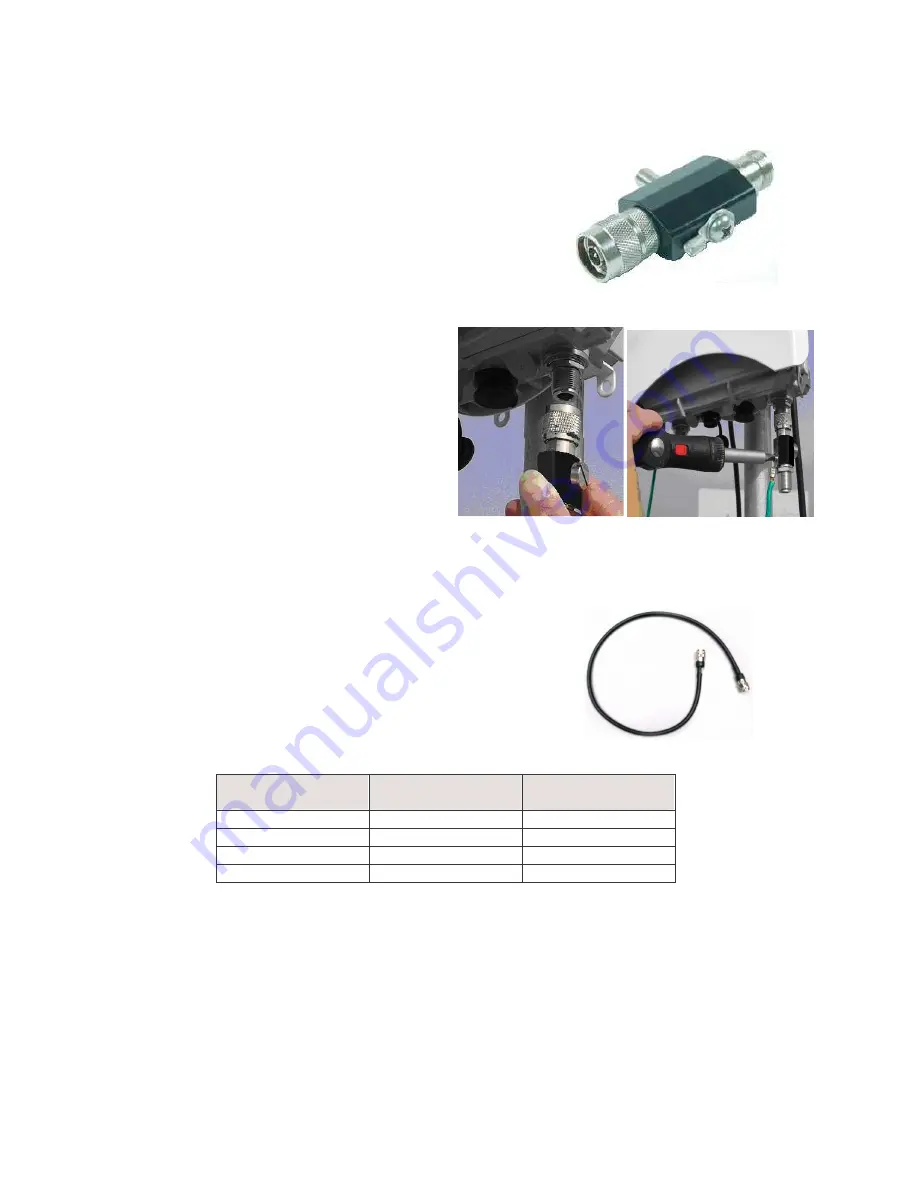
DWR-500 Quick Installation Guide
9
Installing the Lightning Protector
The purpose of the lightning protector is to protect the DWR-
500 from damage caused by a burst of high current from
lightning. Lighting protector as shown in Figure 18, should be
installed between radio port and antenna feeders, and
grounded, such as connecting the surge protector to the
lightning protection system of the building.
Figure 18. Surge Protector.
To install the lightning protector, fasten the
lightning protector to the radio port of DWR-500
as shown in Figure 19. Next, insert the
uninsulated end of the grounding wire into the
connector ring provided on the surge protector.
Ensure that the grounding wire is securely
inserted into the connector ring and tighten the
screw on the lighting protector. Connect the
other side of the grounding wire with the
grounding bar and oil both the exposed ends of
the grounding cable
Figure 19. Installing and grounding the DWR-500.
Installing the Antenna Feeder Cable
Feeder cable is used to connect the antenna with DWR-
500. The feeder is kept as short as possible to reduce loss
of signal strength. If a longer feeder cable is required, it is
recommended to use a thicker feeder cable to reduce the
loss.
The table below shows the typical pass loss of 100m feeder
cable.
Figure 20. N-male to N-male Antenna Cable
Feeder Type
Cable loss for
2.4Ghz (dB/100m)
Cable loss for
5.8Ghz (dB/100m)
3/8”
18.8
31.7
1/2”
12.8
21.4
7D
25.7
42.6
8D
24.8
41.3
Table 3. Feeder length measured against signal strength
To install the feeder, secure one end of the feeder cable to an 11a antenna and tape over the connection
between the antenna and the feeder cable to weather proof the connection. Seen in Figure 21, other end of
the feeder cable will connect to the surge protector that is attached to one of the radio port on the DWR-500.
Wind the feeder into the surge protector tightly and apply tape to weather proof it. Repeat the same for
11b/g antenna on the other radio port on the DWR-500. Use cable ties to secure the cables to the pole
however, take note not to bend the cables into sharp angles.






































